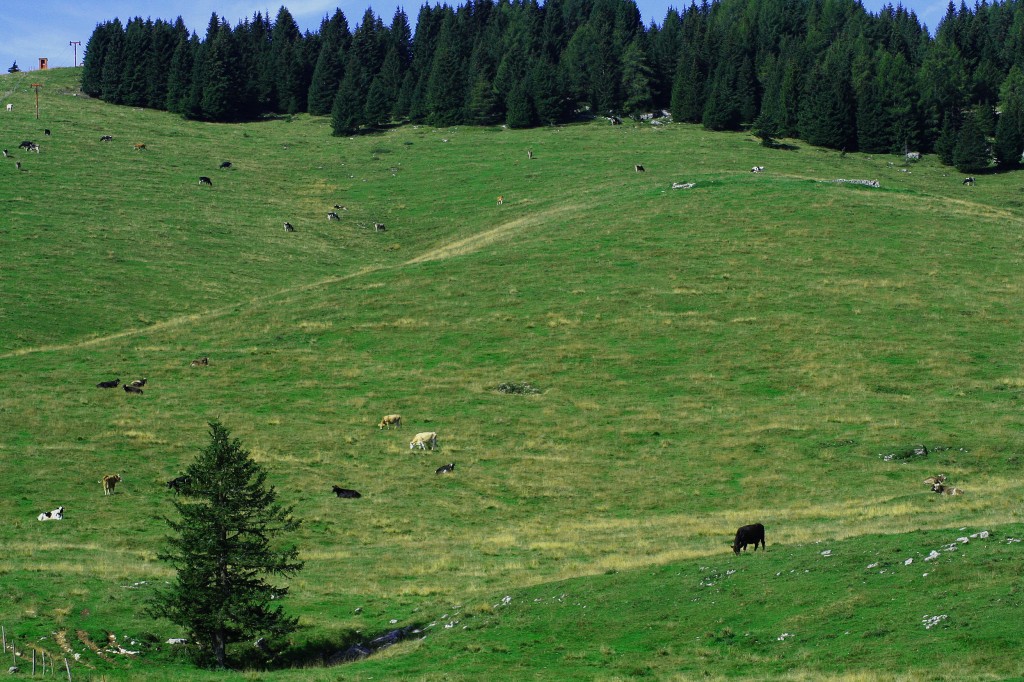Land of Water and Sweetness
The Veneto is a varied region with sublime and enchanting beauty. The symbol of Veneto. and the rest of Italy, is Venice, a city that steals your heart. Henry James wrote in his novel “in Venice and the Veneto….a large apartment made of corridors and living rooms, a place where it is impossible to go out, where true privacy does not exist”.
We begin our exploration of the gentle province of Veneto, with its abundant treasures starting from Chioggia, which is at the southern edge of Venice’s lagoon, between the sea and the lagoon. Chioggia was founded and developed over time in harmony with its prevalent occupation: fishing! A slow walk to the south along the Adriatic Coast, on the delta of the river Po, will lead us to one of the most unpolluted places in Italy — Polesine. But first we follow the lagoon to Venice.
How easy it is to be disappointed by Venice. It’s just enough to arrive half morning at any time between April and October or during Carnivale or during Christmas; It’s enough to troop along to Piazza San Marco, to feed the fat intrusive pidgeons, do a ten minute visit to the Basilica, photograph the Rialto bridge over the Grand Canal, take a gondola ride, bolt down a fixed price tourist menu and leave half way through the afternoon to be so.
BUT the truth is, to get to know Venice and to love it means to visit after Carnivale and to stay at least a week in an apartment rather than a hotel. So, we will start to get familiar with Venice by visiting the market behind San Polo in the morning and be amazed at the variety of locally caught fish and the quality of the fruits and vegetables. In the correct season we can treat ourselves to a moleche, a bitty soft shell crab found in the lagoon. Then take your time to explore the churches and to discover the islands, particularly Burano and Torcelli.
Another jewel of the Veneto is Padua. And my advice for those coming from Venice is to arrive by water coming up the Brenta, the gentle banks of which offer rare architectural treats, for the most part supplied by the architect Andrea Palladio. Padua boasts 3000 years of history, which it is happy to show you as you wander around the historic center of town. Patavina cooking is drawn both from the farm yard (in fact, there is a local hen here named the ‘padovana‘) and the rice which is grown all around the area.
A good way to visit Padua is to be guided by its four ‘withouts’. Did you know about this habit? They will be our guide. So, we will start with a coffee break, and without a doubt we’ll sip it at the first “without”, in fact the old Caffé Pedrocchi which Stendahl first described as the best Cafe in Italy. Caffé Pedrocchi was first opened in 1772 and is “without” doors, which means, in this case, that it practically (but not literally) never shuts and therefore “needs no doors”.
The other “without” is Prato della Valle. Prato (lawn in Italian) della Valle is a square, but not a lawn, so it is “without” grass. The third “without” is the Santo di Padova; the saint without a name because in Padua nobody would ever say Sant’Antonio, but quite simply, the Saint. And lastly, the fourth “without” is the horse without a rider, the wooden horse statue inside the Salone.
Padua is surrounded by hills, the gently sloping Euganei hills, and it is one of the most important spas in Italy. Palladio was born in Padua, but rather than working in his hometown, he expressed his genius is Vicenza. Vicenza has a magnificent old town center and a splendid piazza: Piazza dei Signori. It, too, is surrounded by hills, the Berici hills which are a treasure trove for fine dining.. The local wine , Barbarano goes beautifully with the local Berici Ham and Baccalà alla vicentina.
From Vicenza we travel up to the altopiano of Asiago. Here, the exquisite cheese is made: Asiago DOP. It is a semi-cooked cheese made with cow’s milk, either fresh or aged.
Between Vicenza and Verona, we come upon the Chiampo valley and we are in great wine country: Giambellara and Recioto. Apart from the Berici hills, Vicenza is also protected by the southern slopes of the Alps, with Bassano deil Grappa at the the foothills.
We now arrive in Verona and the visit starts in Piazza Bra in front of the arena, the symbol of the city and the third biggest Roman amphitheater in the world. We carry on to Piazza delle Erbe and finish our walk in Piazza dei Signori. Verona, thanks to Shakespeare, is also home to Romeo and Juliet. And still, in the magical Veneto, there is an even more magical place: the Marca Trevigiana in the province of Treviso, a place of earth and water.
Surrounded by its walls since it was founded in Roman times, Treviso is a city of great beauty, thanks to its monuments, frescoed buildings and its picturesque riverside. Marca Trevigiana is Prosecco DOC country, particularly in Valdobbiadene and Conegliano.
We reluctantly leave Marca Trevigiana and aim for Feltre, the gateway to the Dolomites. Something is guiding us towards the Ampezza basin so that we arrive at the acclaimed Queen of the Dolomites: Cortina d’Ampezzo. Here the art of hospitality is hundreds of years old and the mountains are magnificent.
